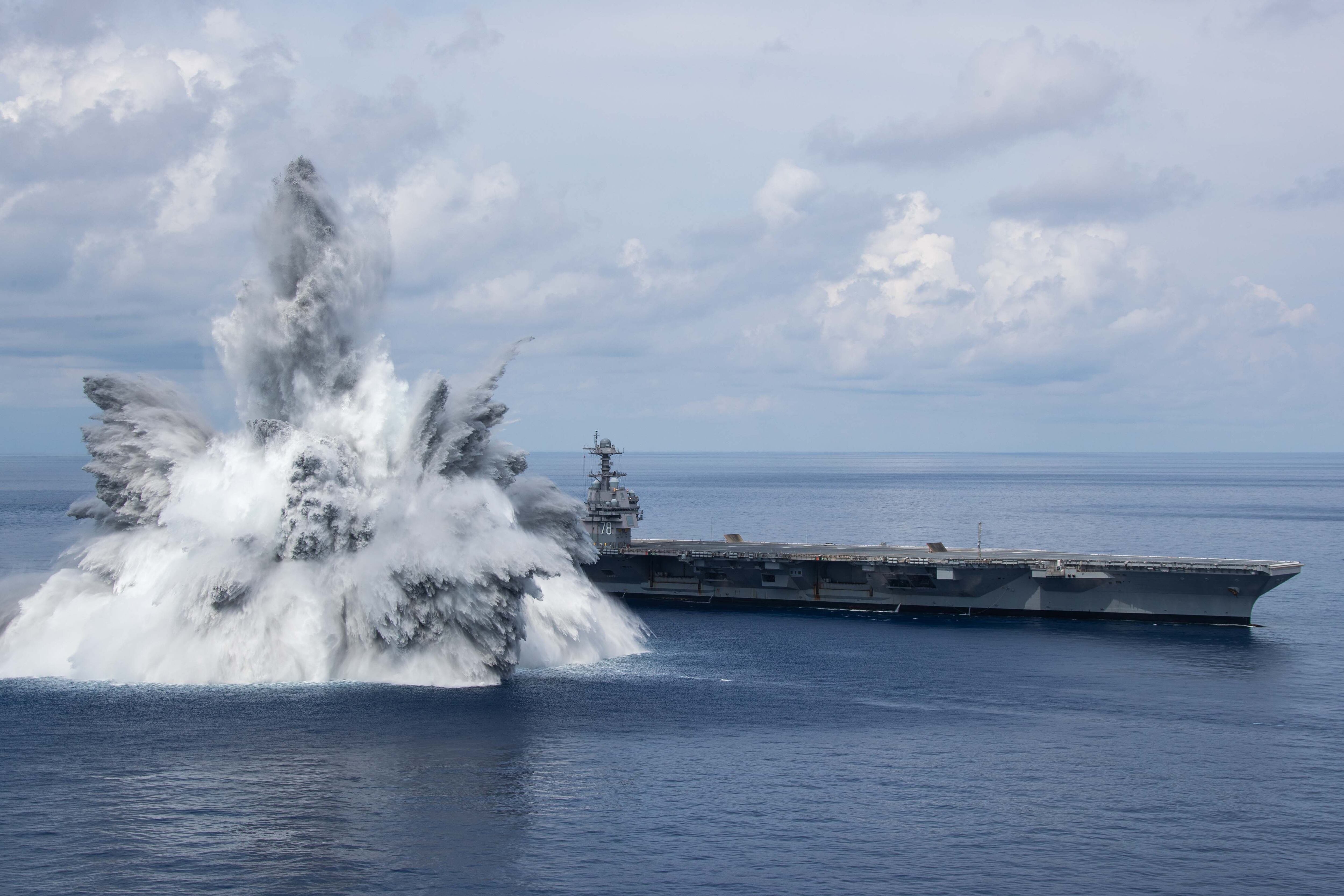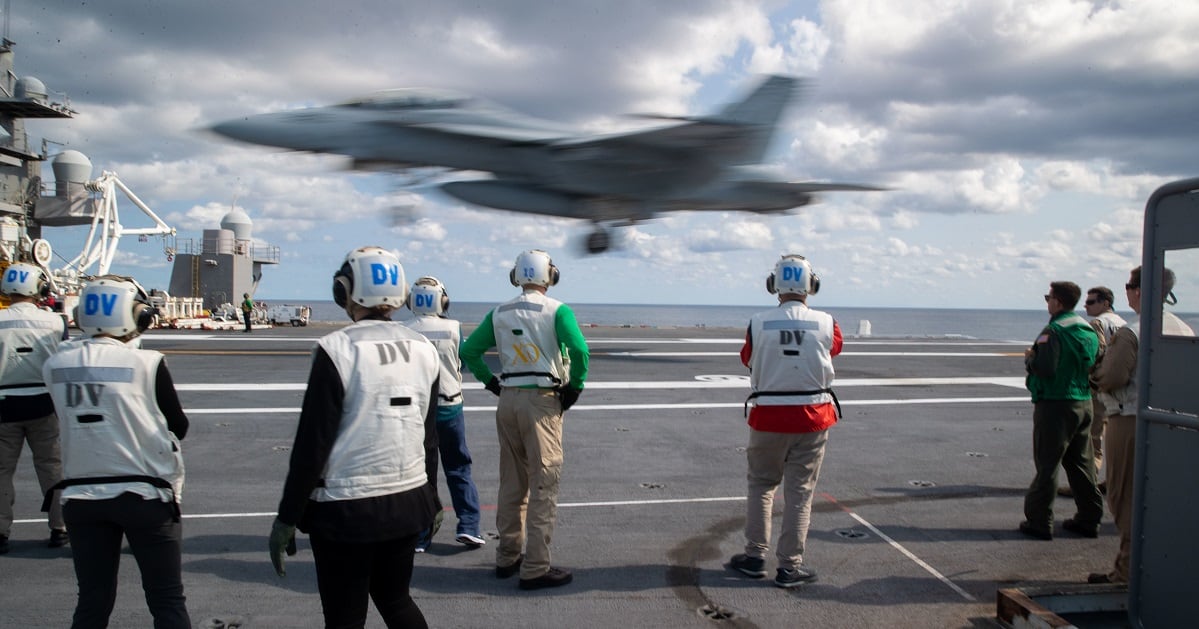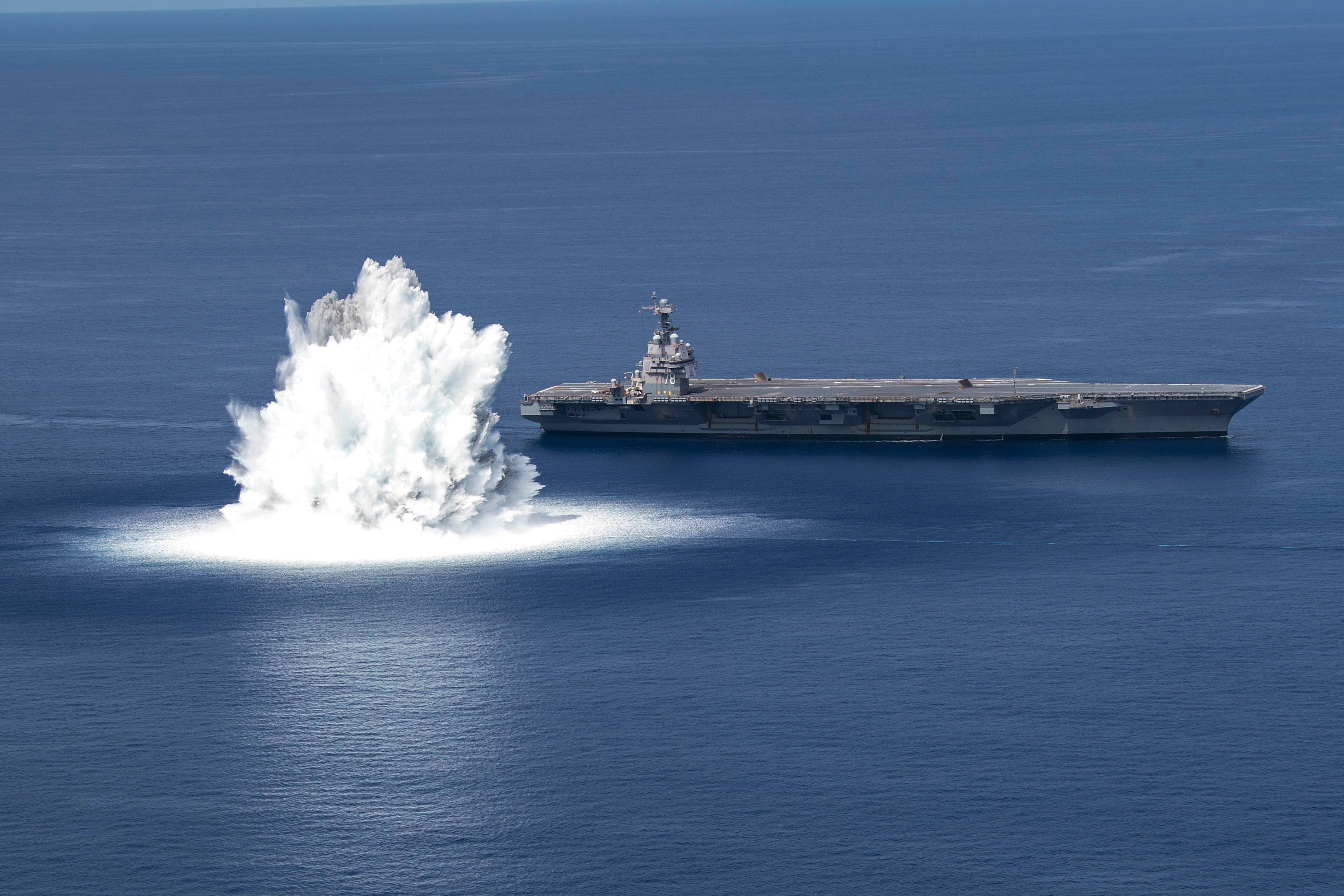The aircraft carrier Gerald R. Ford and its strike group are slated to deploy from Naval Station Norfolk in October for a “service-retained deployment” in the Atlantic.
While underway, the strike group will work alongside allies and partners targeting “innovation and interoperability” as the crew becomes better acquainted with the vessel’s new capabilities, according to 2nd Fleet Commander Vice Adm. Daniel Dwyer.
The “short” service-retained deployment means that the Ford’s strike group will operate under the authority of Chief of Naval Operations Adm. Mike Gilday, rather than a global force management deployment in which the strike group falls under the authority of the geographic combatant commander, Dwyer said.
“This will be a service-retained deployment, providing the Ford Strike Group Commander a chance to test the carrier’s air operability prior to embarking on its first global force management deployment next year,” Dwyer told reporters Sept. 26.
“This historic service-retained deployment is an opportunity for the U.S. Navy to come together with other members of the NATO alliance to exercise and train within the Atlantic and its littorals while testing out advanced technologies on the first new class of U.S. aircraft carrier in more than 40 years,” Dwyer said.
RELATED

To prepare for the more routine deployment in 2023, the Ford will undergo eight phases conducting tasks such as air defense exercises, maritime domain awareness, long-range maritime strikes, distributed maritime operations, anti-submarine warfare exercises, as well as naval integration, Dwyer said.

Nearly all of Carrier Air Wing 8 will embark on the Ford, including all eight squadrons comprising F-18 Super Hornets, E-2D Advanced Hawkeyes and EA-18G Growlers, along with MH-60 Sierra and MH-60 Sea Hawk helicopters.
The Ford’s carrier strike group also includes the destroyers Ramage, McFaul and Thomas Hudner, the cruiser Normandy, the replenishment oiler Joshua Humphreys, dry cargo ship Robert E. Peary and U.S. Coast Guard cutter Hamilton.
The carrier was originally scheduled to deploy in 2018, but encountered multiple technical problems, equipment malfunctions and delays as at least 23 new technologies were incorporated into the design since construction of the ship kicked off in 2005. Systems like the advanced weapons elevators and the Electromagnetic Aircraft Launch System also experienced challenges.

The Ford’s post-delivery test and trials began in October 2019 and concluded in May 2021. In the summer of 2021, the ship conducted three shock trials — marking the first time a carrier has conducted underwater shock testing since the Theodore Roosevelt did so in 1987.
The Ford then completed a six-month maintenance availability at Huntington Ingalls Industries-Newport News Shipbuilding in Newport News, Virginia, followed by sea trials at Naval Station Norfolk this year.




